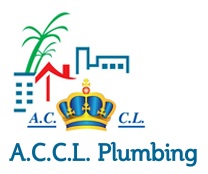Tankless Water Heater Installation: Benefits and Installation Process for Tankless Water Heaters
Tankless water heaters have gained popularity in recent years due to their energy efficiency, space-saving design, and continuous hot water supply. If you’re considering installing a tankless water heater in your home, it’s essential to understand the benefits and installation process involved.
Benefits of Tankless Water Heaters
1. Energy Efficiency: Tankless water heaters only heat water as needed, reducing energy consumption and lowering utility bills.
2. Space-Saving Design: Without a storage tank, tankless water heaters take up less space, making them ideal for smaller homes or apartments.
3. Continuous Hot Water: Tankless water heaters provide a continuous supply of hot water, eliminating the risk of running out of hot water.
4. Longer Lifespan: Tankless water heaters typically last longer than traditional tank-style water heaters, with an average lifespan of 15-20 years.
5. Reduced Risk of Leaks: Without a storage tank, tankless water heaters are less prone to leaks and water damage.
Types of Tankless Water Heaters
1. Electric Tankless Water Heaters: These units use electric heating elements to heat water and are often more expensive to operate than gas-powered units.
2. Gas-Powered Tankless Water Heaters: These units use natural gas or propane to heat water and are generally more cost-effective than electric units.
Installation Process
1. Assessment and Planning: Determine your home’s water heating needs and assess the installation location.
2. Unit Selection: Choose a tankless water heater that meets your energy efficiency and hot water demands.
3. Installation: Hire a licensed plumber or electrician to install the unit, ensuring proper venting and electrical connections.
4. Testing and Maintenance: Test the unit to ensure proper function and schedule regular maintenance to ensure optimal performance.
Installation Considerations
1. Venting Requirements: Gas-powered tankless water heaters require proper venting to ensure safe operation.
2. Electrical Requirements: Electric tankless water heaters require a dedicated 240-volt circuit.
3. Water Quality: Tankless water heaters may require water treatment or filtration systems to prevent mineral buildup.
4. Space and Location: Ensure the installation location is accessible, well-ventilated, and protected from the elements.
Cost Considerations
1. Unit Cost: Tankless water heaters are generally more expensive than traditional tank-style water heaters.
2. Installation Cost: Installation costs vary depending on the complexity of the installation and local labor rates.
3. Energy Savings: Tankless water heaters can provide long-term energy savings, offsetting the higher upfront cost.
Conclusion
Tankless water heater installation can provide numerous benefits, including energy efficiency, space savings, and continuous hot water supply. By understanding the benefits, types, and installation process involved, homeowners can make an informed decision about whether a tankless water heater is right for their home. Consult with a licensed professional to determine the best solution for your specific needs.

